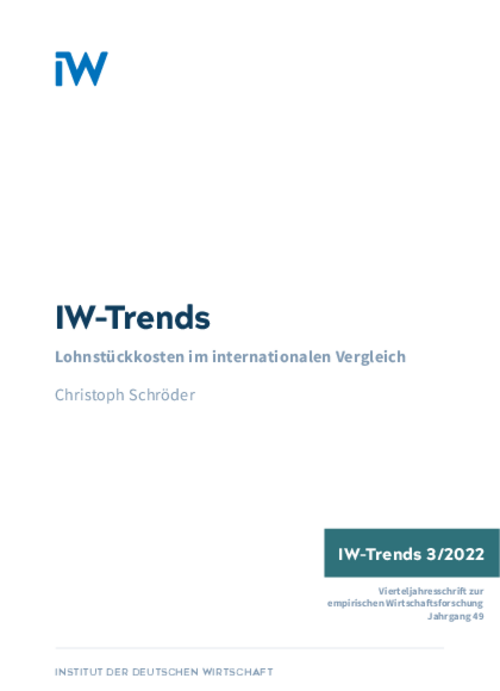In 2021, German unit labour costs were an average of 13 per cent higher than in the 27 countries in our comparison and 8 per cent higher than in other countries in the Eurozone.

An International Comparison of Unit Labour Costs: The Cost Competitiveness of German Industry in Times of Multiple Crises

In 2021, German unit labour costs were an average of 13 per cent higher than in the 27 countries in our comparison and 8 per cent higher than in other countries in the Eurozone.
Although German industry enjoys above-average productivity, this was not enough to compensate for such relatively high labour costs. Between 1999 and 2021, unit labour costs in Germany’s manufacturing sector increased by slightly more than 4 per cent overall, matching the average rise in the comparator countries on a euro basis. At 12 per cent, the increase in other euro countries was somewhat higher. Over the long term, the relative unit labour cost position of German industry has passed through a number of different phases. Following a sharp deterioration in the 1990s, by 2007 considerable ground had been made up. However, once the Great Recession of 2007-9 had been overcome, Germany’s unit labour costs again rose at an above-average rate. The manufacturing recession of 2019 drove up unit labour costs by over 4 per cent and further worsened German competitiveness. Nonetheless, by 2021 Germany had stabilised unit labour costs and regained the relative position it had enjoyed in 2018. In the first half of 2022, however, unit labour costs in manufacturing rose again, increasing by almost 5 per cent over the first six months of 2021. In contrast, other countries in the Eurozone managed to keep labour costs down to just under 3 per cent. With input costs rising sharply and the world facing major economic uncertainties, it is important that Germany maintain cost competitiveness and thus retain its manufacturing base.

An International Comparison of Unit Labour Costs: The Cost Competitiveness of German Industry in Times of Multiple Crises

More on the topic

German Wage Policy between Inflation and Stagnation: Are Conflicts with the Aims of Monetary Policy Looming?
After the economic and financial crisis of 2008/9, the German labour market soon began to recover, creating scope for a comparatively expansive wage policy.
IW
The Pros and Cons of Trade Union Membership
The decline in collective bargaining coverage in Germany is often attributed to the reluctance of companies to join an employers' association which negotiates collective agreements.
IW